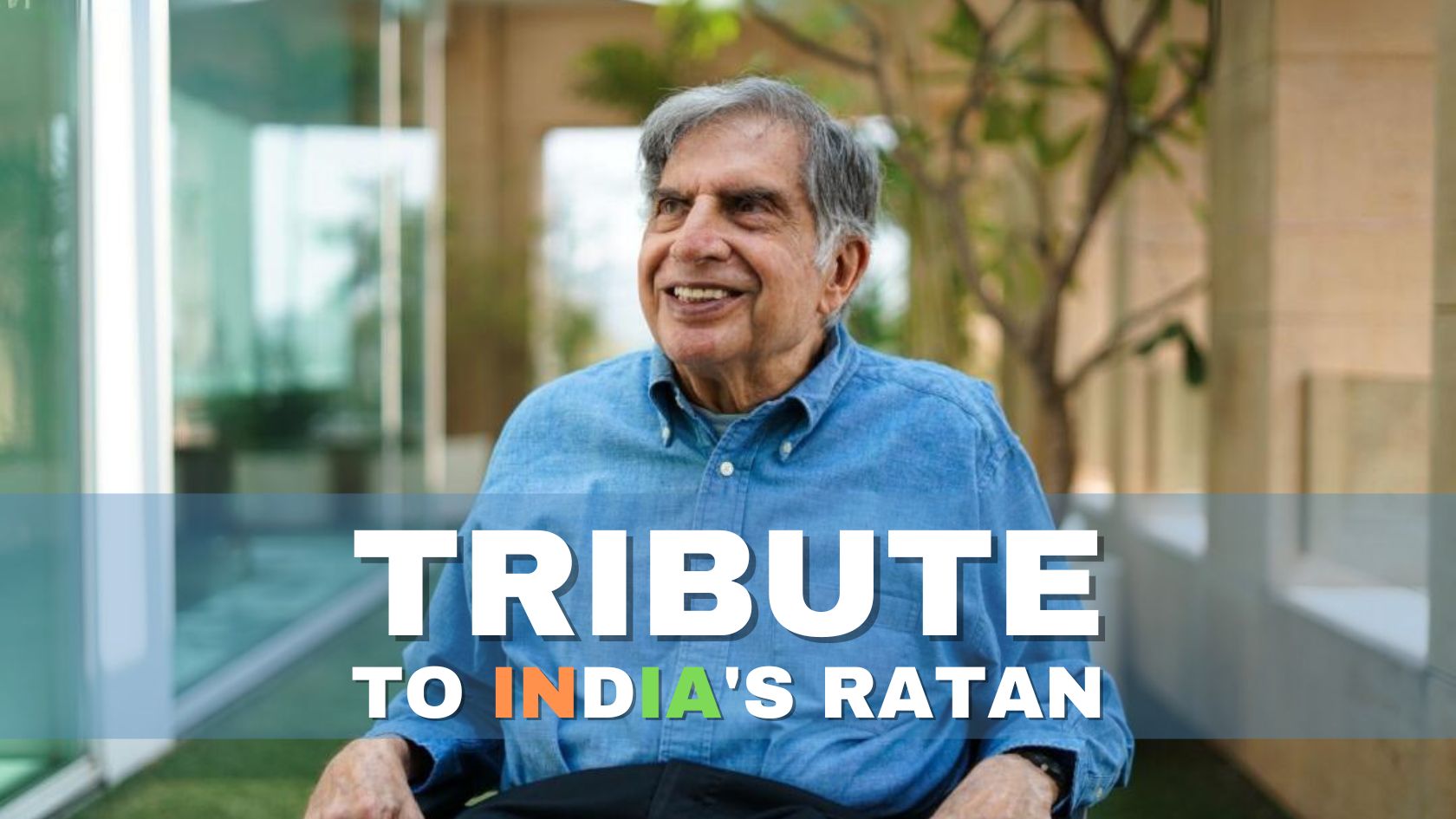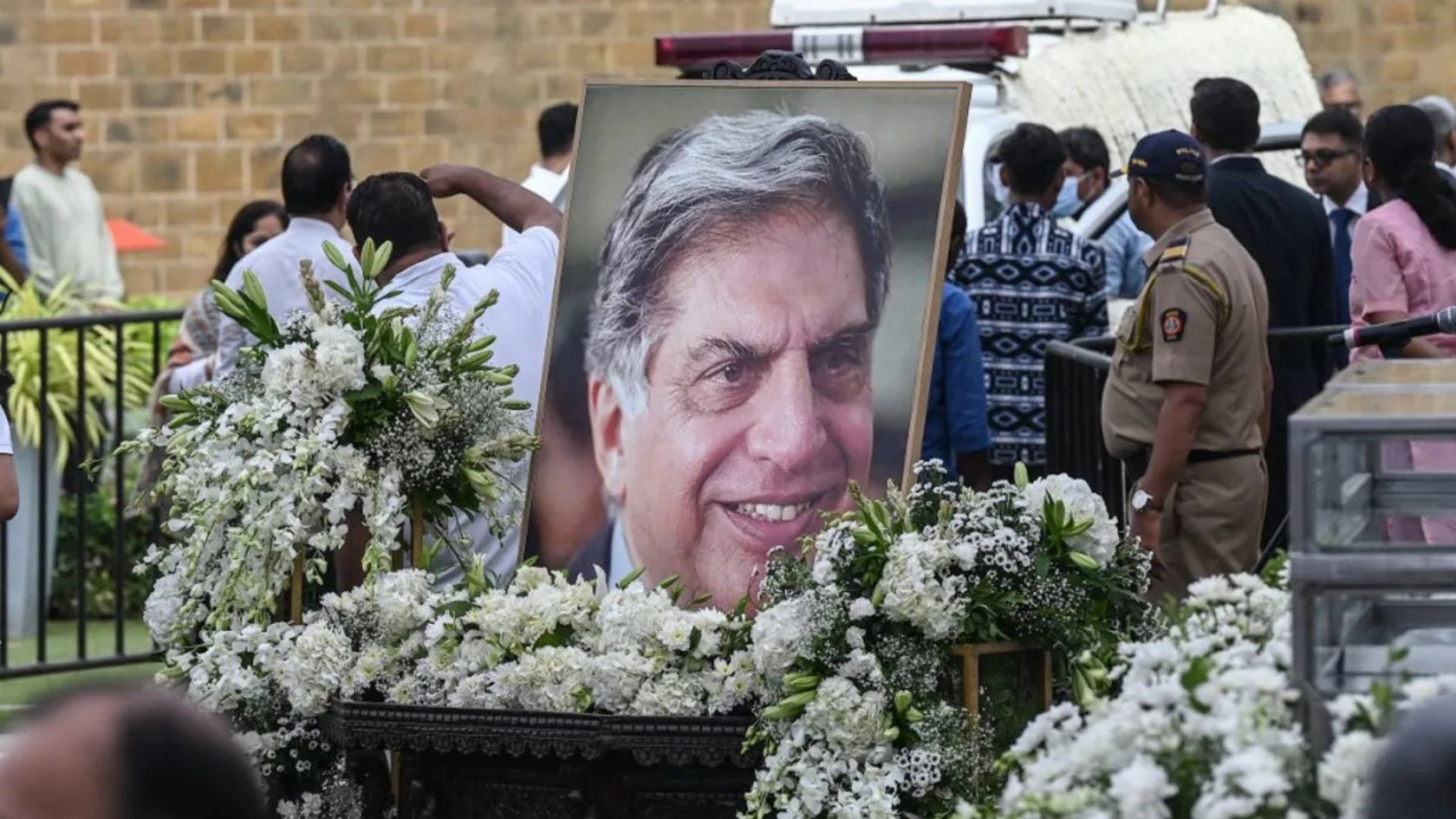
1130 PM, 9th October, 2024. Curtains went down on the life and times of one of the greatest Indians of all time – Ratan Naval Tata: a champion of India Inc, a great philanthropist and above all, right till the end, a humble and decent human being. To be very honest, I feel quite inadequate in penning a tribute to this great man. He was a true giant of the modern times and I feel any wordplay I am able to conjure shall prove to be quite insufficient. Yet, try one must and so shall I.
Life may have turned out very differently for Ratan Tata. As a young man, his passion was architecture. After graduating from Riverdale High School, New York in 1955, Ratan Tata joined Cornell University to pursue graduation in architecture. It was while he was at Cornell that Tata made the acquaintance of A. Quincy Jones, the celebrated architect and educator. Jones was visiting Cornell for a few weeks. Tata was much inspired; Jones was impressed by the young man and after completing his university studies, Tata joined Jones at the latter’s firm Jones & Emmons in Los Angeles. However, fate had different plans for the young man.
When Ratan Tata was ten, his parents had separated. He was adopted and raised by his grandmother Navajbai Tata. It was Navajbai who now intervened, her failing health forcing her grandson to return to India. Plans of settling in LA were sent packing and Tata flew back to India. Back home, Ratan Tata had an offer to join IBM. When JRD Tata heard about this, he immediately saw to it that Ratan Tata would be working with the family. In 1962, Ratan Tata formally joined Tata Industries: he spent his first six months with Telco (Later Tata Motors) before moving to Tisco (later Tata Steel) in 1963.
In 1969, Ratan Tata moved to Australia to take over as the Group’s resident representative there. He was a back year later, spending some time in a new business, Tata Consultancy Services, before picking his first independent assignment: he was named Director-in-charge of National Radio & Electronics (NELCO). The company was in pretty bad shape, ailing financially. Not many probably gave much chance to this shy, young man of turning things around. But turn it around he did and by 1975, NELCO was in fine health. Sadly, the good times wouldn’t last. Labor troubles and a declining economy meant NELCO was back in the red around 1977. His next assignment, at Empress Mills, also proved unsuccessful.
A turnaround for Ratan Tata came in 1981, when he was named Chairman of Tata Industries. He may have been shy and quiet, but he never lacked steel. Slowly, Ratan Tata’s strategic vision started taking shape. He realized that the Group was invested in too many businesses, many of them unrelated, there was very little centralization and too much power was invested in subsidiaries resulting in duplication of several work streams. In 1991, when the legendary JRD Tata stepped down as Chairman of Tata Sons, he showed his uncanny business sense by naming Ratan Tata as his successor.

It was great timing. The economy had opened up, liberalization meant the world was now open to India – in other words, the iron was hot. And Ratan Tata struck the perfect blow. One of his first acts was to reduce the power enjoyed till then by the heads of subsidiary businesses. This was met with stiff resistance and a fair bit of anger but Ratan Tata stuck to his guns. A retirement age was introduced, subsidiary business heads were made to report to a Group head, operations were streamlined to eliminate duplication and overlaps and the Group started exiting unrelated businesses. Tata Group was reborn as a true behemoth conglomerate with a unified goal – making the Tata brand dominant and universal.
In the 21 years that Ratan Tata was the Chairman of Tata Sons (till 2012), the Group remained financially profitable every year, revenue grew 46 times and net profit, 51 times! When Ratan Tata took over, only 10% of Tata revenues came from global businesses. By the time he stepped down, it had gone up to 67% with operations in 100+ countries.
But the financial performance was only one side of it. As the leader, Ratan Tata actively encouraged innovation, adoption of high-end tech to continuously strive for new product development, promoted delegation and grooming of young leaders. It was thanks to Ratan Tata that one of India’s oldest and most respected business houses became a true global brand. And Tata Group under Ratan Tata made the most definitive statement by acquiring Jaguar-Land Rover in a landmark deal to usher in the new century.
But above all his business conquests, what always stood out was Ratan Tata’s basic humanity. In 1983, the anti-Sikh riots left many Sikh truck drivers without their vehicles which had been burnt. Ratan Tata ensured donation of Tata trucks to the poor souls to enable them to rebuild their lives.
During a visit to the University of New South Wales (UNSW) in Australia to receive an honorary doctorate, Tata presented a challenge to researchers there to find ways to provide clean water to Indian villages. This eventually led to UNSW to develop capacitive deionization technology towards this end.
Under Ratan Tata’s inspirational leadership, the Tata Trust made remarkable contributions in fields like healthcare, education, rural development, water, sanitation, hygiene, and skill development. In 2010, Tata Trust donated Rs 220 crore to the Tata Medical Center in Newtown, Kolkata for developing a state of the art cancer treatment and research facility. During the Covid-19 pandemic of 2020-21, Tata Trust and Tata Sons made a contribution of Rs 1500 crores to fight the dreaded disease.
A relatively lesser known aspect of Ratan Tata’s personality was his love for the canine species. Entry of stray dogs became unrestricted at Taj Hotels and a shelter for them was created at Tata Group HQ thanks to Ratan Tata. In July of this year, Tata Trust Small Animal Hospitals was launched in Mahalaxmi – the first of its kind institution in India. It was Ratan Tata’s last project and illustrated his deep love for animals especially dogs.
Nov 26th, 2008: a dark day in Indian history when Lashkar terrorists from Pakistan launched a beastly attack on Mumbai. One of the places targeted was the iconic Taj Hotel. Of the 166 deaths due to the attack, 33 occurred at the Taj. For almost 3 days, as a tense stand-off took place between the terrorists holed up inside the hotel and Indian security forces, the 70-year old Tata chairman stood outside, keeping a tab on events. It was the perfect demonstration of who Ratan Tata was as a person: a man deeply devoted to his businesses and the well being of both Tata and so on. It is this quality above all that made him so beloved and one of a kind business leader.
Ever since Ratan Tata’s death, there has been clamor on social media for awarding of Bharat Ratna to Ratan Tata. But even if that does not come to be, it hardly matters. Because Ratan Tata will be always be a Ratan in Bharat’s history.
Go well sir.
 Based out of Kolkata, Trinanjan is a market researcher by profession with a keen interest in Indian history. Of particular interest to him is the history of Kolkata and the Bengal region. He loves to write about his passion on his blog and also on social media handles.
Based out of Kolkata, Trinanjan is a market researcher by profession with a keen interest in Indian history. Of particular interest to him is the history of Kolkata and the Bengal region. He loves to write about his passion on his blog and also on social media handles.

At the southernmost tip of this mesmerising ensemble lies the majestic Great Nicobar Island, boasting an impressive landmass of about 910 square kilom...

Bharath has always been a land traversed by spiritual masters/ Guru since time immemorial. These spiritual masters have always upheld the core princip...

South India contains its fair share of unique pilgrimage centres. These divine places of worship have a prominent Sthala Purana, devoted followers, di...